In this guide, you will learn how to import and apply LUTs (Look-Up Tables) in DaVinci Resolve. LUTs are extremely useful tools that help you change and enhance the entire color scheme of your videos. Whether you are working professionally or are a hobby editor, adjusting colors has a significant impact on the final quality of your projects. Let's dive straight into the steps.
Key Takeaways:
- Using LUTs can significantly improve your color correction.
- Importing LUTs into DaVinci Resolve is simple and fast.
- After applying LUTs, further color adjustments are necessary to achieve the best results.
Step-by-Step Guide
Importing LUTs
To import LUTs into DaVinci Resolve, you first need to open the software and navigate to the correct area. To do this, click on the gear icon in the lower right corner of the user interface.
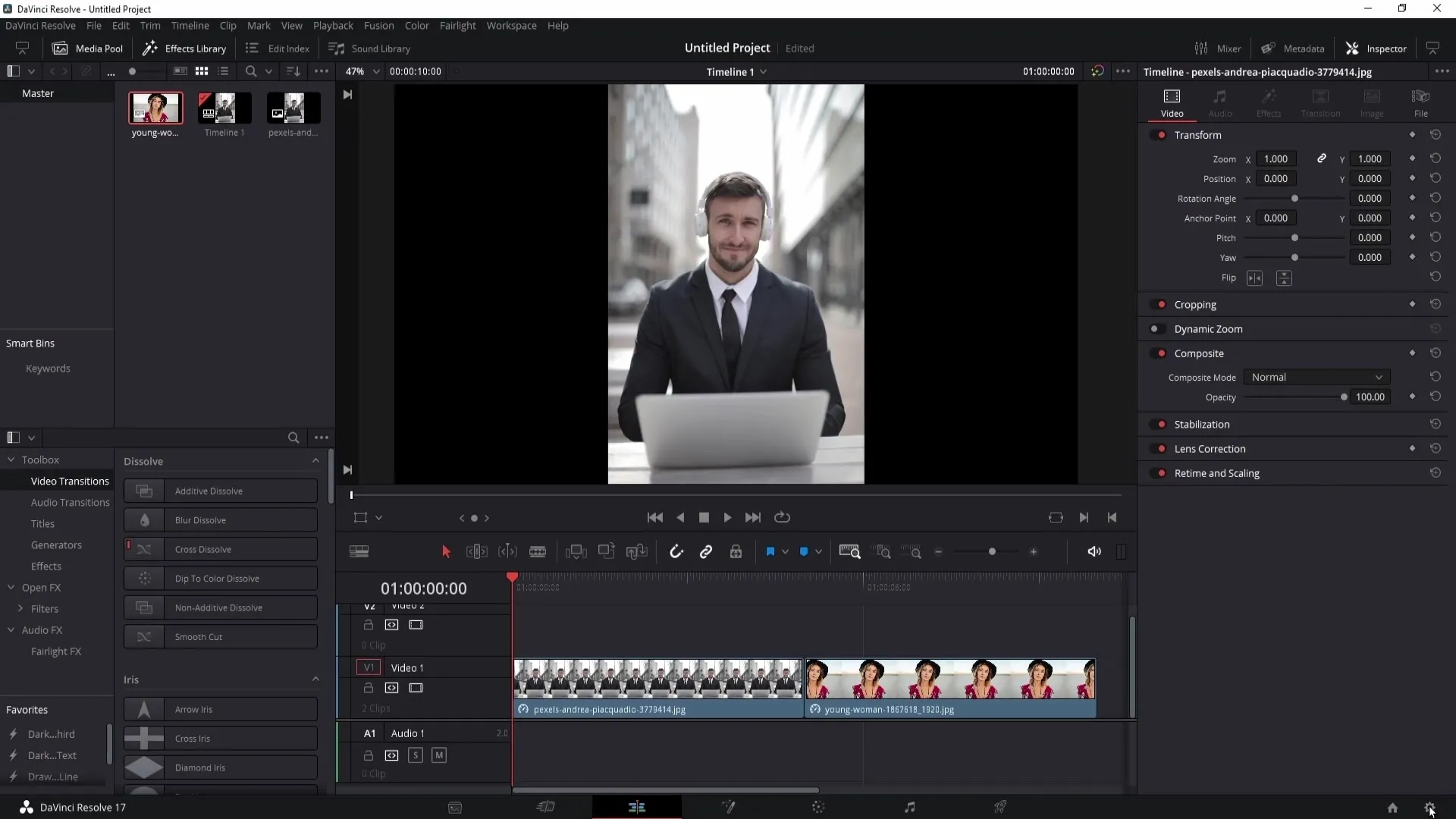
You should now be in the "Color Management" section. Here, you will find the option "Open LUT Folder." Click on it to open the folder where you want to install your LUT files.
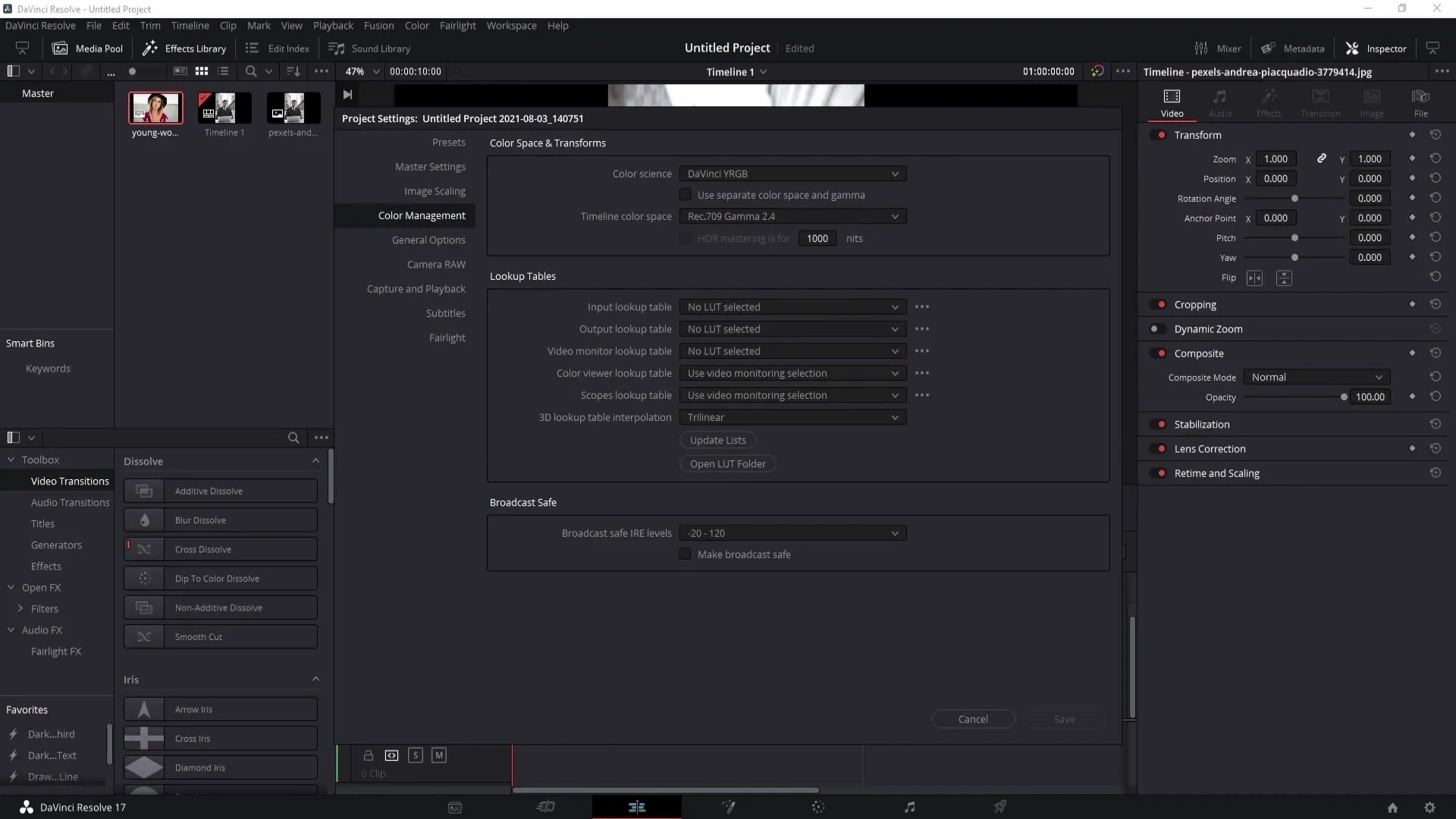
After selecting the correct folder, click on "Update Lists" to ensure that DaVinci Resolve recognizes the new LUTs. Don't forget to click on "Save" to save the changes.
Your LUTs have now been successfully imported into DaVinci Resolve. You can now use them in your projects.
Applying LUTs
To apply a LUT to a clip, you have several options. You can either apply LUTs on a clip-by-clip basis or apply them to all clips at once. For applying to all clips, drag an "Adjustment Clip" from the effects library onto your timeline.
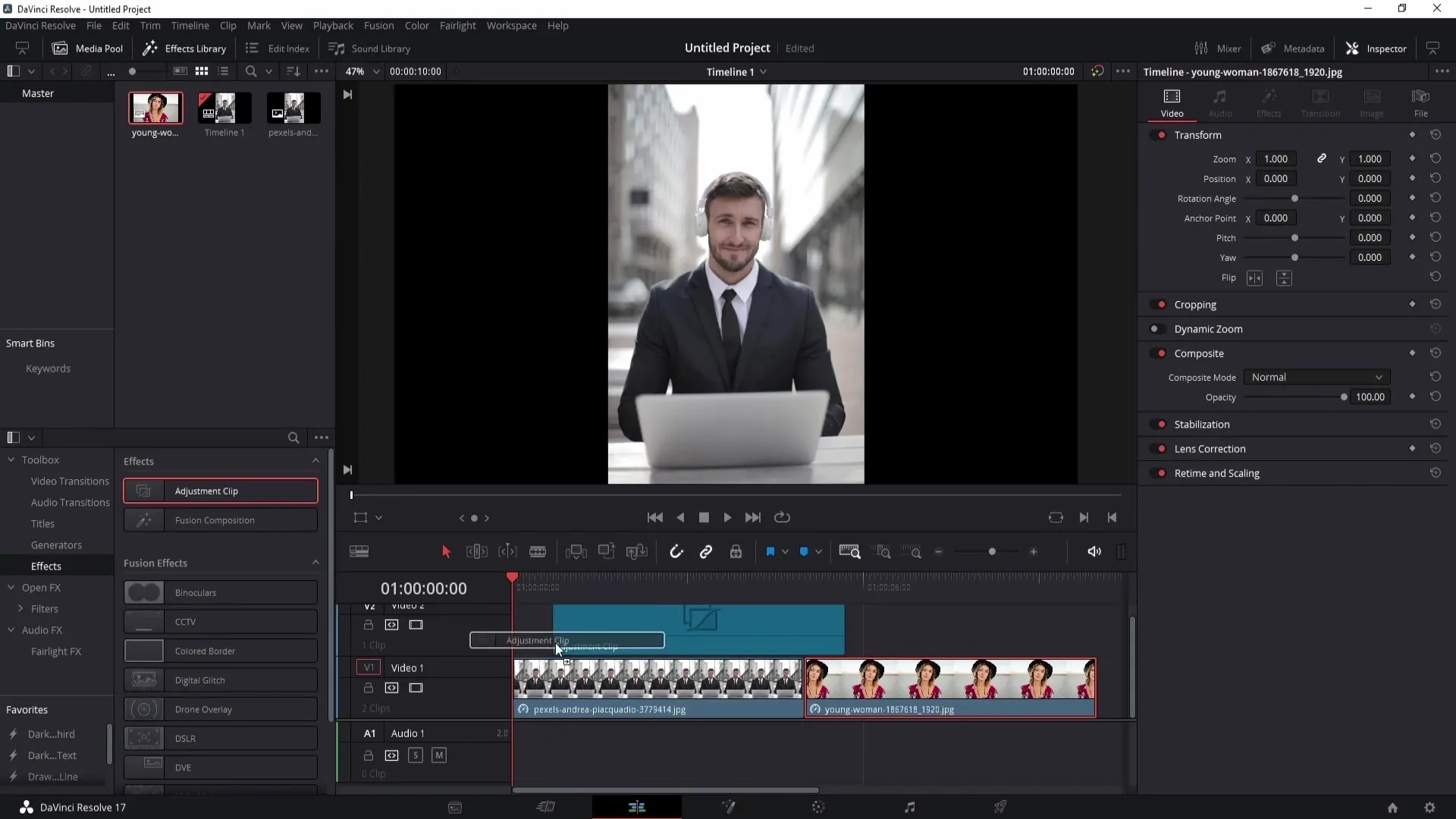
Ensure that the "Adjustment Clip" extends across all the clips you want to affect. Once done, select the "Adjustment Clip" and go to the Color Grading section.
In the Color Grading section, at the top, you will find a tab for LUTs. Click on it, and you will see your imported LUTs. Here, you can scroll through the different LUTs and preview the effects on your clip.
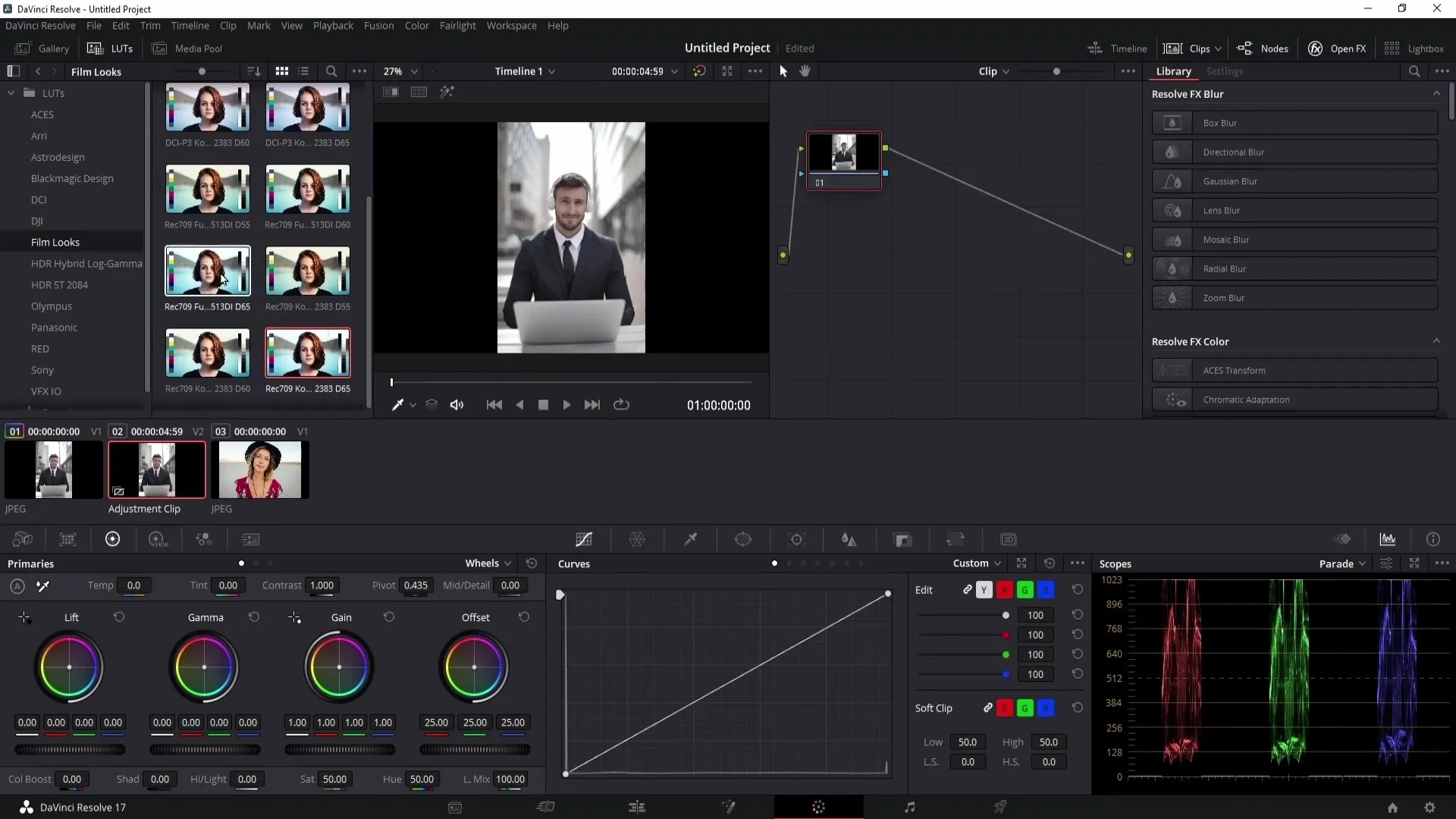
If the previews are not showing, go to the three dots at the top and make sure "Live Preview" is activated. This gives you a better idea of how the LUT looks on your clip.
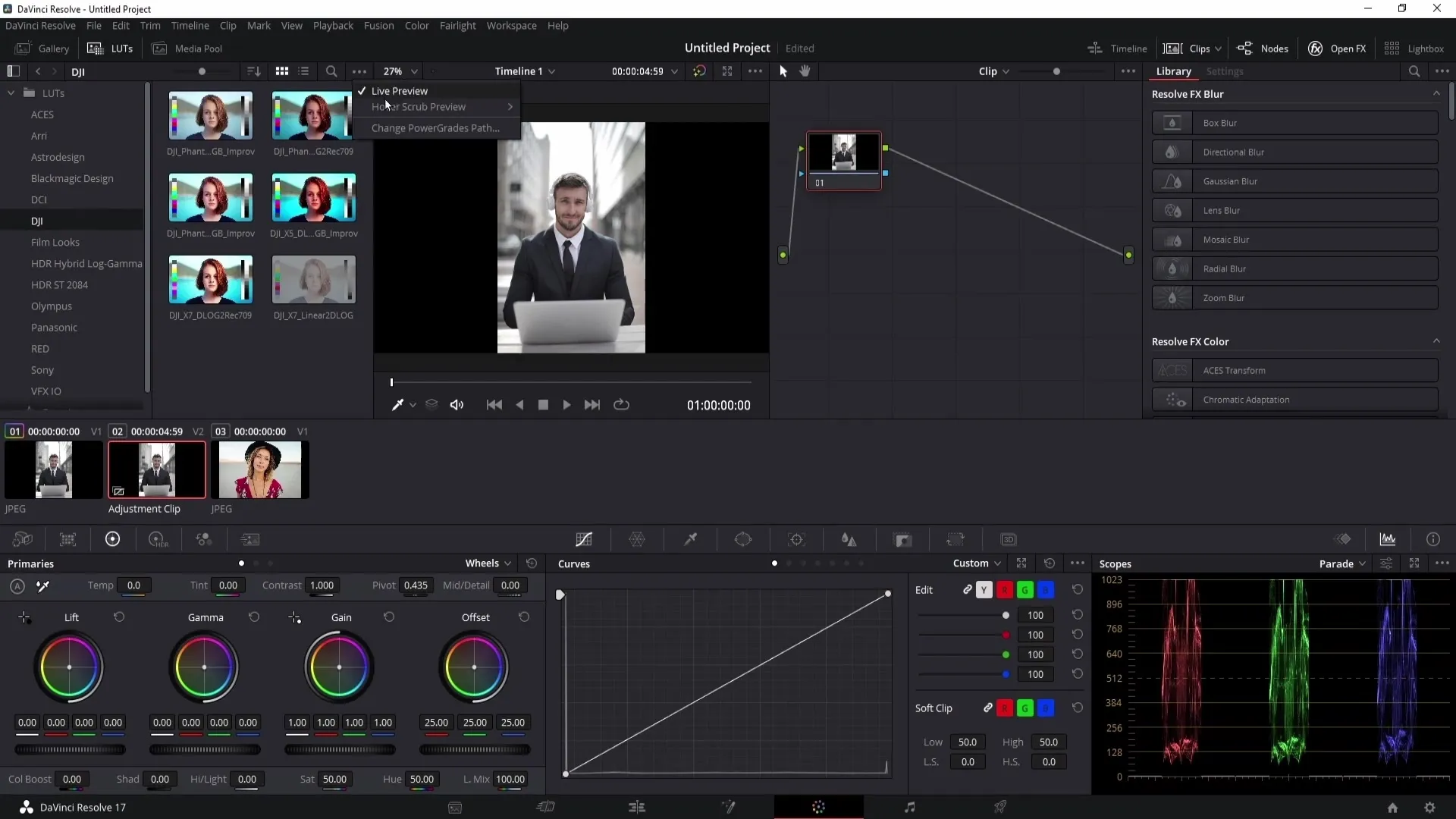
Before applying a LUT, I recommend editing the exposure, contrast, and colors. These adjustments should come at the beginning of your editing process, with the LUT being applied last. Always encode LUTs as the final touch in your pipeline to achieve the best results.
Color and Contrast Settings
To increase contrast, you can work with the tone curve. Create a new node by pressing Alt and S. In the first node, you can now adjust the tone curve to lift the highlights and lower the shadows.
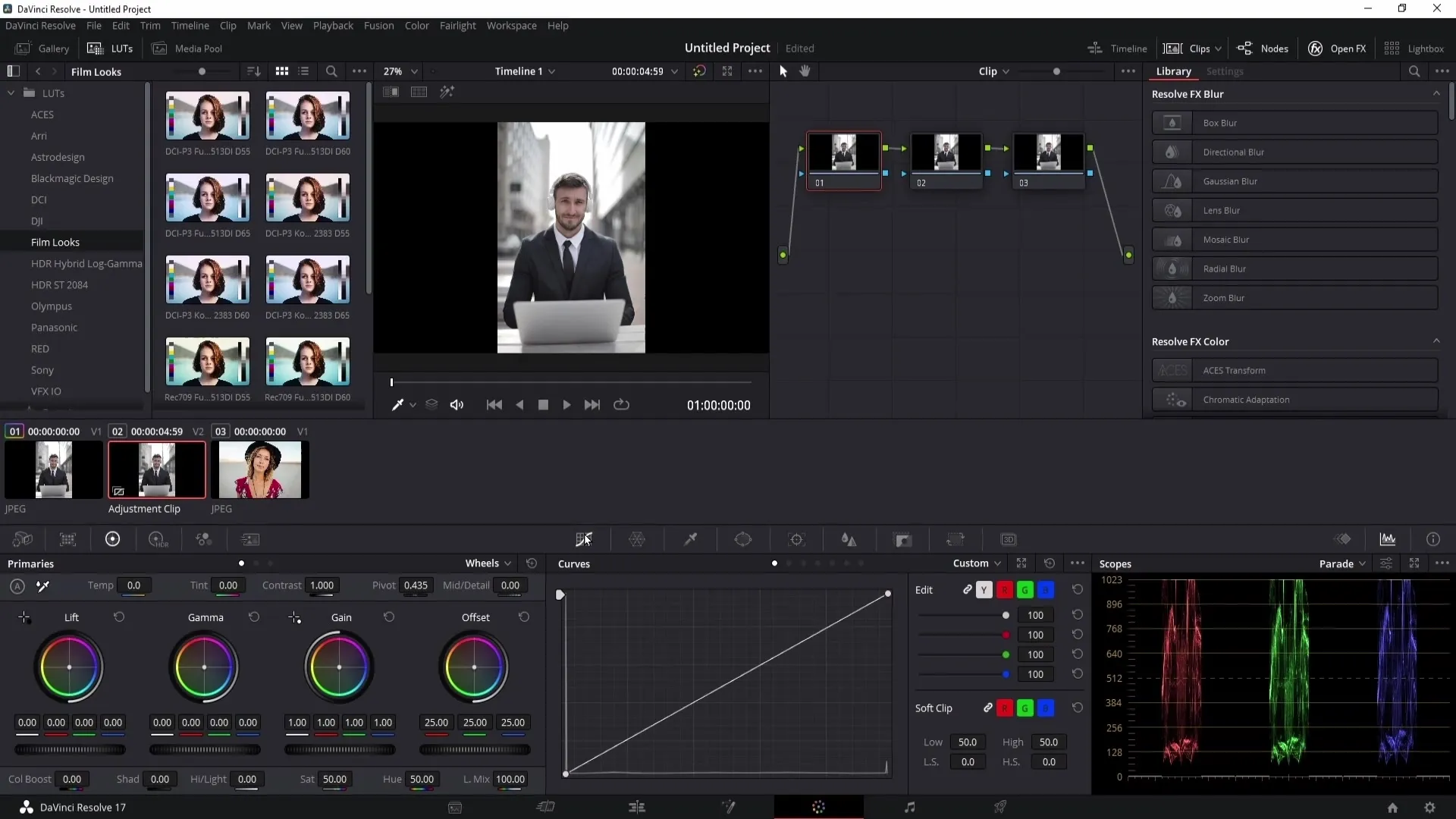
You will see that by adjusting the curve, the contrasts in your image become clearer. Remember to label the node so you can keep track. You can right-click on the node and insert an appropriate name under "Node Label."
In the next node, you can work with saturation and color temperature. Increasing saturation can be particularly useful if the image looks pale. Drag the temperature towards the cooler range to make the image more appealing.
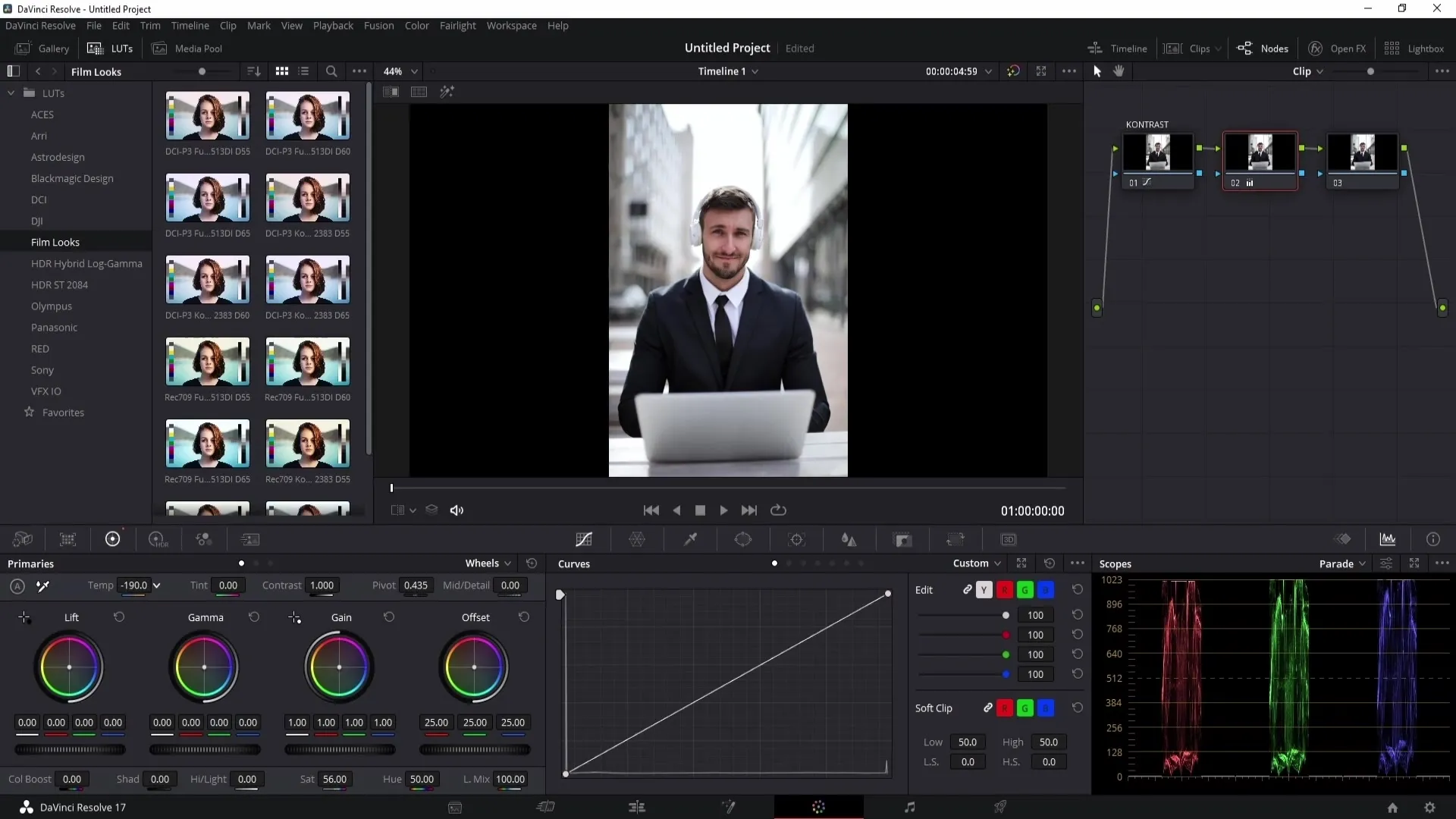
After you have made these adjustments, also name this note by right-clicking and selecting "Note Label" again. This way you will know what you have edited in this note.
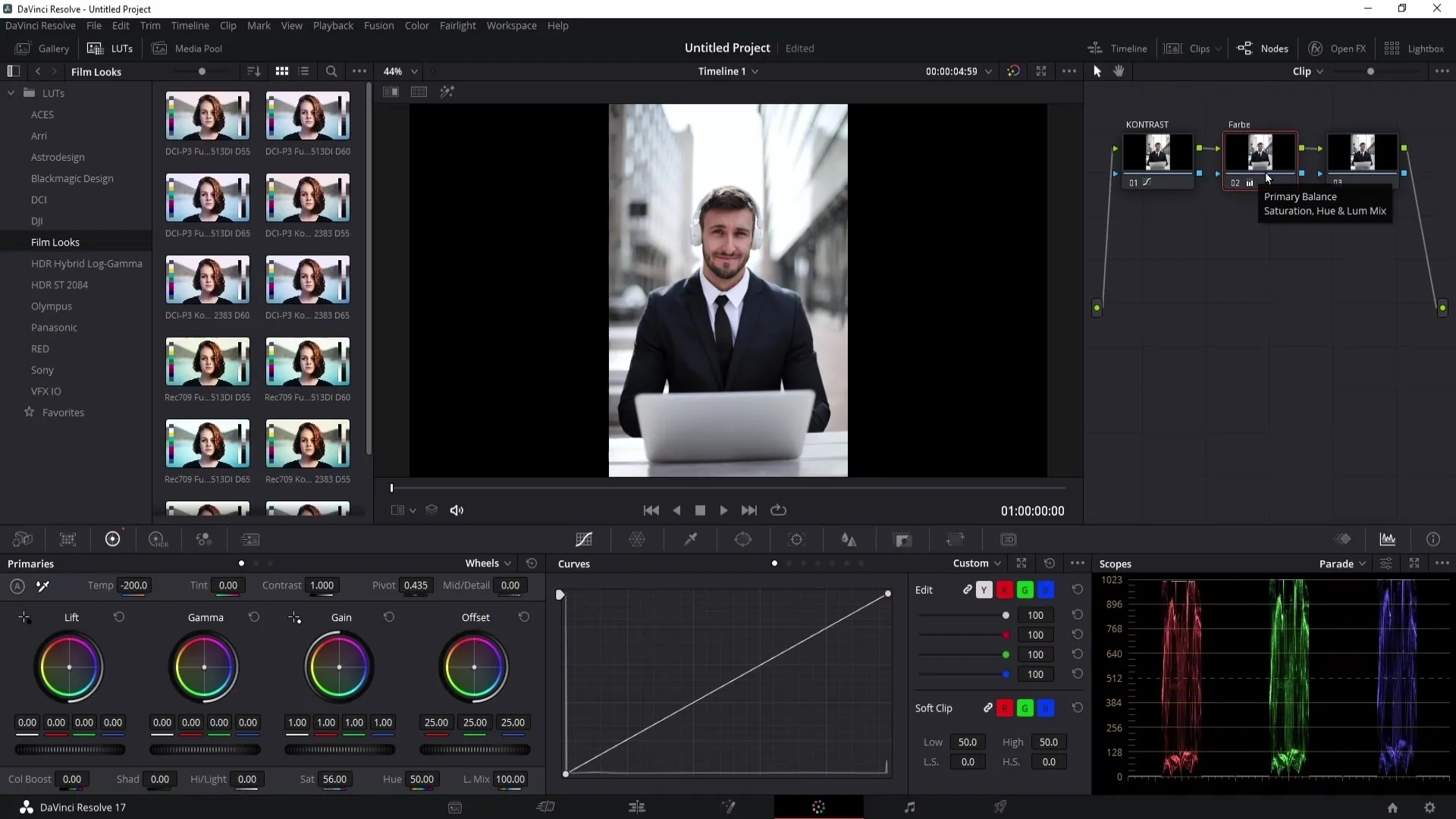
Now add the LUT. Simply click on the LUT that you like. If you have a specific LUT that is your favorite, you can save it as a favorite by clicking on the star at the top right.
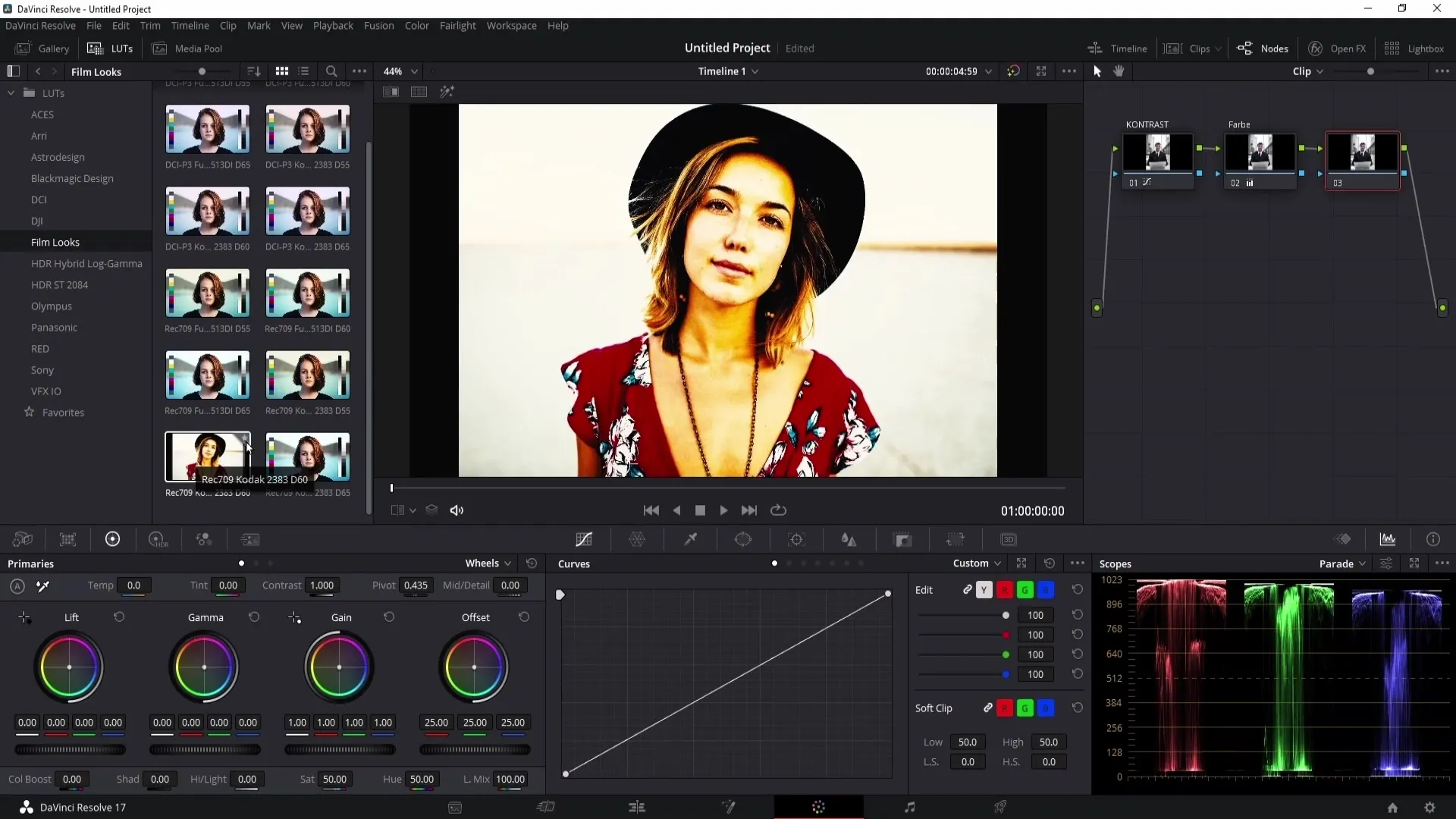
When applying the LUT, adjust the Gain if necessary using the Key settings. Reduce the Gain to adjust the effect of the LUT. A lower value ensures that the LUT has less dominance.
If you want to compare the effects, you can toggle them on and off to see the difference between the original image and the edited image.
Applying Notes to Other Clips
To apply the same color adjustments to other clips, simply click on the desired clip and scroll with the mouse wheel to the clip with the notes you want to transfer. You will see the rainbow frame, indicating that the settings are being transferred.
If you want to address multiple clips at the same time, hold down the Shift or Control key while selecting the desired clips, and then click again on the clip with the notes. This way you can update all selected clips at once.
Summary
In this guide, you have learned how to import LUTs and apply them in DaVinci Resolve. We have covered the processes of adjusting contrasts, colors, and applying LUTs in detail. With the right techniques and tools, you can significantly enhance the color palette of your videos.
Frequently Asked Questions
How do I import LUTs in DaVinci Resolve?Click on the gear icon, go to "Color Management," and select "Open LUT Folder". Choose your LUTs, click on "Update Lists," and then on "Save".
How do I apply a LUT to my clips?Drag an "Adjustment Clip" to the timeline, go to the Color Grading section, and select the desired LUT from the list.
Should I adjust the LUT or the exposure settings first?It is recommended to first edit the exposure and colors and apply the LUT last.
Can I save LUTs as favorites?Yes, simply click on the star at the top right to save a LUT as a favorite.
How can I apply the same note settings to multiple clips?Select the clip with the notes and hold down the Shift or Control key while selecting the other clips that should adopt the same notes.


